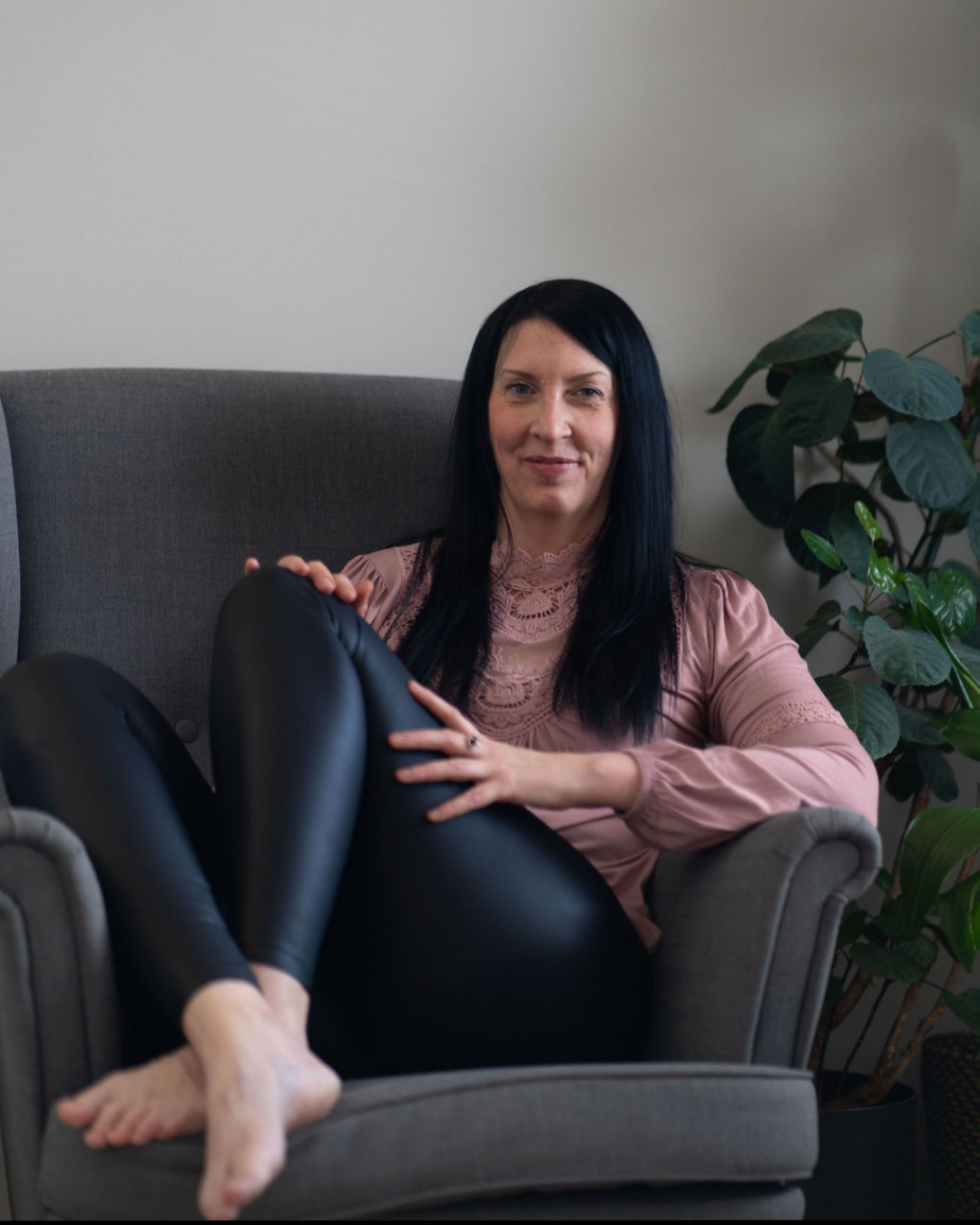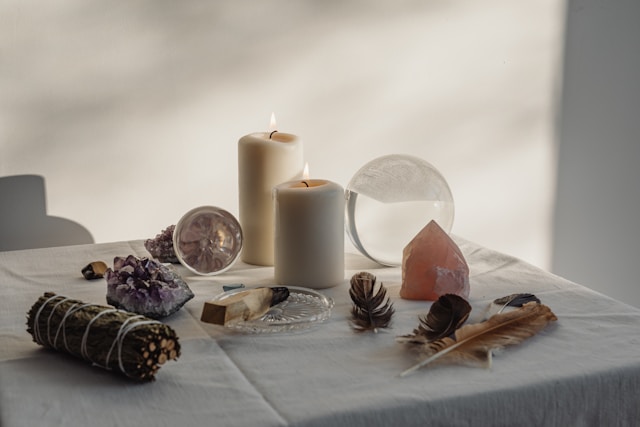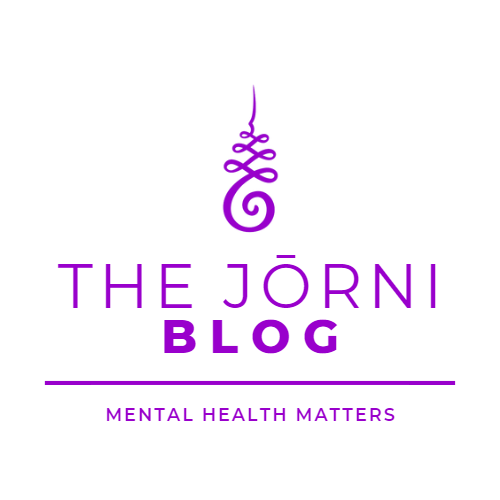A Journey to Wholeness
Inner healing is a deeply personal journey that allows us to reconnect with our true selves and overcome past traumas. This process is essential for achieving holistic wellbeing, as it helps us address emotional wounds and negative patterns that impact our mental and emotional health. By engaging in inner healing, we can release the pain that holds us back and pave the way for a more fulfilling life.
Understanding our inner world is a crucial aspect of this journey. It involves self-reflection, mindfulness, and the willingness to confront and heal from past experiences. Embracing our emotions and developing self-love are key components of this process. When we acknowledge and accept our feelings, we can begin to heal and transform from within.
Let's explore the key elements of inner healing and discover how we can embark on this transformative path. From practical tools like meditation and mindfulness to building a positive self-image and setting healthy boundaries, there are many ways we can support our journey towards inner peace and resilience.
"You have the power to heal your life, and you need to know that. We think so often that we are helpless, but we’re not."
- Louise L. Hay
The Empowering Oracle
Marika Bergvik’s work is dedicated to guiding women toward the profound realization that they are the authors of their own lives. As a Shamanic Oracle, her purpose is to guide and empower women on a life-altering journey of self-discovery, inner healing, and the reclamation of their authentic power.

Marika acts as a guide, supporting women in reconnecting with their inner wisdom, intuition, and the profound strength that resides within. Through her compassionate and transformative approach, she helps women tap into their deepest potential and embrace their true selves.
Understanding Inner Healing
Inner healing is a journey that helps us reconnect with our true selves, release past traumas, and develop a deeper sense of wellbeing. It addresses the emotional wounds and negative patterns that shape our mental and emotional health. By embarking on this path, we can transform our lives and cultivate a more authentic and fulfilling existence.
What is Inner Healing?
Inner healing involves addressing and resolving emotional wounds, traumas, and negative patterns that affect our mental and emotional health. It requires self-reflection, mindfulness, and the willingness to confront and heal from past experiences. This process not only alleviates pain but also helps us understand the root causes of our emotional distress and learn how to manage them constructively.
Why is Inner Healing Important?
Inner healing is crucial for overall wellbeing as it helps us release emotional pain and trauma, develop healthier relationships, enhance our mental and emotional resilience, and achieve a sense of inner peace and fulfillment. By healing our inner wounds, we become better equipped to face life's challenges with a balanced and positive mindset, which in turn improves our quality of life and interactions with others.

The Role of Self-Compassion
Self-compassion plays a crucial role in the inner healing process. It involves treating ourselves with the same kindness and understanding that we would offer to a friend in distress. Practicing self-compassion allows us to acknowledge our suffering without judgment, creating a safe space for healing. By being gentle with ourselves, we can break free from self-criticism and foster a nurturing inner environment that supports our emotional recovery and growth.
The Power of Forgiveness
Forgiveness is another vital component of inner healing. This doesn't mean condoning the actions that caused us pain, but rather releasing the hold that these experiences have on our emotional wellbeing. Forgiving ourselves and others helps us let go of resentment and bitterness, which can otherwise hinder our healing process. Through forgiveness, we can free ourselves from the past and open up to new possibilities for happiness and personal growth.
Inner healing is a continuous journey that requires patience, commitment, and an open heart. By understanding its importance and incorporating practices like self-compassion and forgiveness, we can navigate this path more effectively. Ultimately, inner healing empowers us to live more authentically, fostering deeper connections with ourselves and others, and achieving a greater sense of inner peace and fulfillment.
Steps to Begin Your Inner Healing Journey
The first step in inner healing is self-reflection. This involves taking time to look inward and becoming aware of our thoughts, emotions, and behaviors. Journaling can be a powerful tool in this process, as writing down our thoughts and feelings helps us identify patterns and gain insights into our inner world. Additionally, practicing mindfulness keeps us present and aware of our emotions without judgment, allowing us to understand and manage our inner experiences more effectively.

It's crucial to acknowledge and accept our emotions rather than suppressing them. Finding healthy ways to express our emotions, such as talking to a trusted friend or engaging in creative activities like art or music, can be very beneficial. These outlets provide a safe space for us to release our feelings and gain clarity on what we're experiencing. Practicing self-compassion is also essential, as it involves treating ourselves with kindness and understanding during difficult times. By being gentle with ourselves, we can foster a nurturing inner environment that supports our emotional recovery and growth.
Starting your inner healing journey with self-reflection, mindfulness, and emotional expression sets a strong foundation for long-term wellbeing. Embracing our emotions and practicing self-compassion allows us to heal from within and develop a deeper connection with ourselves. As we continue this journey, we become more resilient, balanced, and capable of facing life's challenges with a positive mindset.
Cultivating Self-Love
Cultivating self-love is a vital aspect of inner healing. It allows us to appreciate our worth, treat ourselves with respect, and foster a healthier relationship with our inner selves. By developing self-love, we create a strong foundation for emotional resilience and personal growth.
Building a Positive Self-Image
A positive self-image is crucial for self-love. This involves recognizing our strengths and valuing ourselves regardless of our flaws or past mistakes. One effective way to build a positive self-image is through the use of positive affirmations. Affirmations are positive statements that challenge and overcome negative thoughts. Repeating affirmations such as "I am worthy," "I am enough," and "I deserve love and respect" can help rewire our thinking patterns. Additionally, engaging in activities that nourish our mind, body, and spirit, such as exercise, meditation, or pursuing hobbies, can enhance our self-esteem and overall wellbeing.

Practicing Self-Care
Self-care is a fundamental component of self-love. It involves taking deliberate actions to care for our physical, emotional, and mental health. This can include establishing a regular routine that prioritizes adequate sleep, nutritious meals, and physical activity. Emotional self-care might involve setting aside time for relaxation, practicing mindfulness, or engaging in activities that bring joy and fulfillment. Mental self-care could include reading, learning new skills, or seeking therapy to address any unresolved issues. By prioritizing self-care, we demonstrate to ourselves that our needs and wellbeing are important.
Setting Healthy Boundaries
Setting healthy boundaries is essential for maintaining our emotional wellbeing and fostering self-respect. Boundaries define what is acceptable and unacceptable behavior from others and help protect our energy and mental health. Learning to say no when necessary is a critical skill in boundary-setting. It involves recognizing our limits and not overcommitting to avoid burnout. Clearly expressing our needs and expectations to others helps ensure that our boundaries are understood and respected. This might include communicating openly about our availability, emotional capacity, and personal space. By establishing and maintaining healthy boundaries, we create a safe and supportive environment for ourselves.
Developing Self-Compassion
Self-compassion is another key element of self-love. It involves being kind and understanding toward ourselves, especially during times of failure or difficulty. Instead of harsh self-criticism, self-compassion encourages us to treat ourselves with the same empathy and care that we would offer a friend. Techniques for developing self-compassion include practicing self-kindness, recognizing our shared humanity, and maintaining a mindful awareness of our experiences. Self-kindness involves speaking to ourselves in a gentle and reassuring manner, while recognizing our shared humanity reminds us that everyone makes mistakes and faces challenges. Mindful awareness helps us stay present with our emotions without judgment, allowing us to process and move through them more effectively.

Embracing Personal Growth
Embracing personal growth is a vital part of cultivating self-love. This involves a commitment to continuous self-improvement and self-discovery. Setting personal goals, seeking new experiences, and being open to learning can significantly contribute to our growth and self-love. Reflecting on our progress and celebrating our achievements, no matter how small, reinforces our self-worth and encourages further development. Personal growth also means accepting and learning from our mistakes, understanding that they are opportunities for learning rather than reasons for self-punishment.
Cultivating self-love is an ongoing journey that requires patience, dedication, and self-awareness. By building a positive self-image, practicing self-care, setting healthy boundaries, developing self-compassion, and embracing personal growth, we can foster a deeper sense of self-worth and emotional resilience. This journey not only enhances our inner healing but also enriches our relationships and overall quality of life.
Practical Tools for Inner Healing
Inner healing is a profound and ongoing journey, and utilizing practical tools can greatly enhance our ability to navigate this path. These tools provide us with the techniques and support necessary to address emotional wounds, reduce stress, and foster a sense of peace and resilience. Here, we explore various methods that can assist in the process of inner healing.

Meditation and Mindfulness Practices
Meditation and mindfulness are powerful practices that help us connect with our inner selves and cultivate a sense of peace. These practices involve focusing our attention and awareness on the present moment, which can reduce stress and promote emotional healing.
Expressive Therapies
Expressive therapies involve using creative arts as a form of therapy, which can be particularly effective in processing emotions and trauma.
Holistic Practices
Holistic practices address the mind, body, and spirit, offering a comprehensive approach to inner healing.
Self-Reflection and Growth
Continuous self-reflection and personal growth are integral to inner healing. By regularly evaluating our progress and setting new goals, we can ensure that we are moving forward on our healing journey.

Utilizing these practical tools can significantly enhance our inner healing journey. By incorporating meditation and mindfulness practices, seeking support, engaging in expressive therapies, embracing holistic practices, and committing to self-reflection and growth, we can foster a deeper sense of peace, resilience, and emotional wellbeing. Inner healing is an ongoing process, but with the right tools and support, we can navigate this path with greater ease and confidence.
The TAKEAWAY
Embracing the journey of inner healing involves recognizing and celebrating our progress, no matter how small. Keeping a journal of our achievements and positive changes helps us track our growth and provides a tangible reminder of how far we've come. By rewarding ourselves for our efforts and milestones, we reinforce positive behavior and encourage continued progress. This acknowledgment fosters a sense of accomplishment and motivates us to keep moving forward on our healing path.
Inner healing is an ongoing process that requires patience, commitment, and an openness to new experiences. Staying open to learning about ourselves and exploring new ways to heal ensures that we continue to evolve. This might involve trying different therapeutic practices, engaging in new hobbies, or seeking out new sources of inspiration and support. The willingness to adapt and change is crucial, as it allows us to respond to our needs and circumstances as they develop, promoting continual growth and healing.

The journey of inner healing is deeply personal and ever-evolving. By celebrating our progress and remaining open to change, we create a dynamic process that supports our ongoing development. This approach not only helps us overcome past traumas and emotional wounds but also empowers us to build a resilient and fulfilling life.

